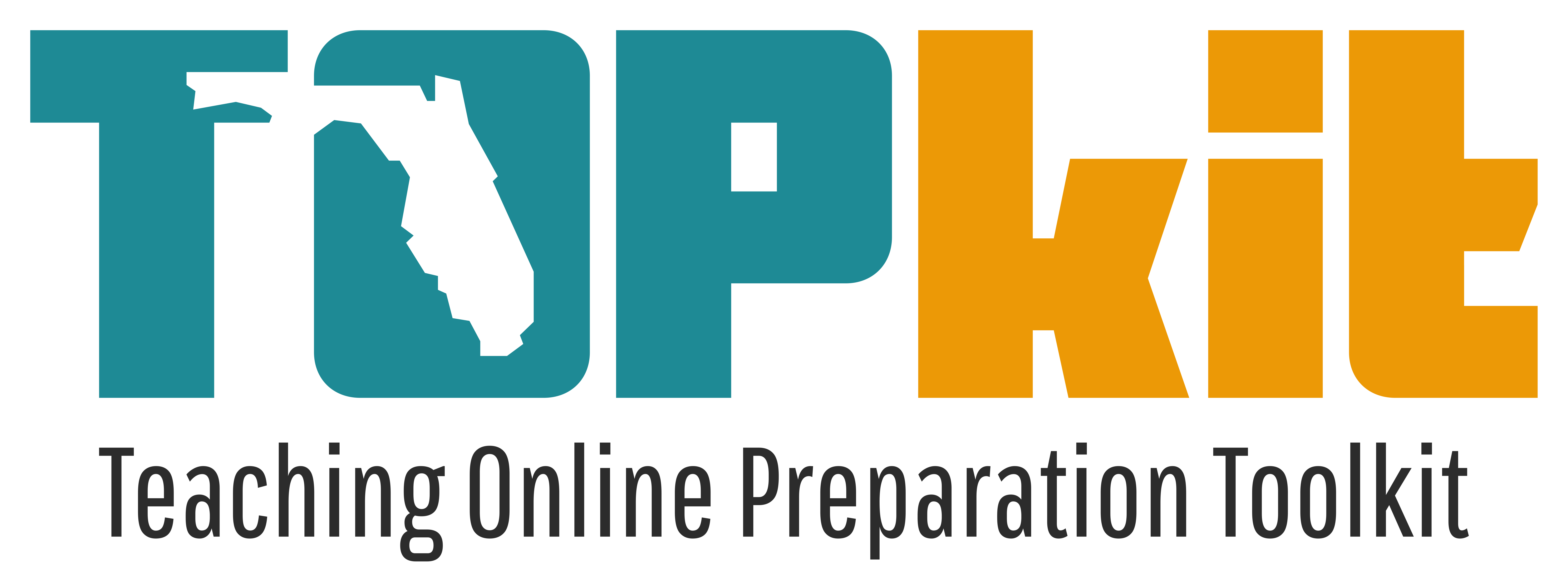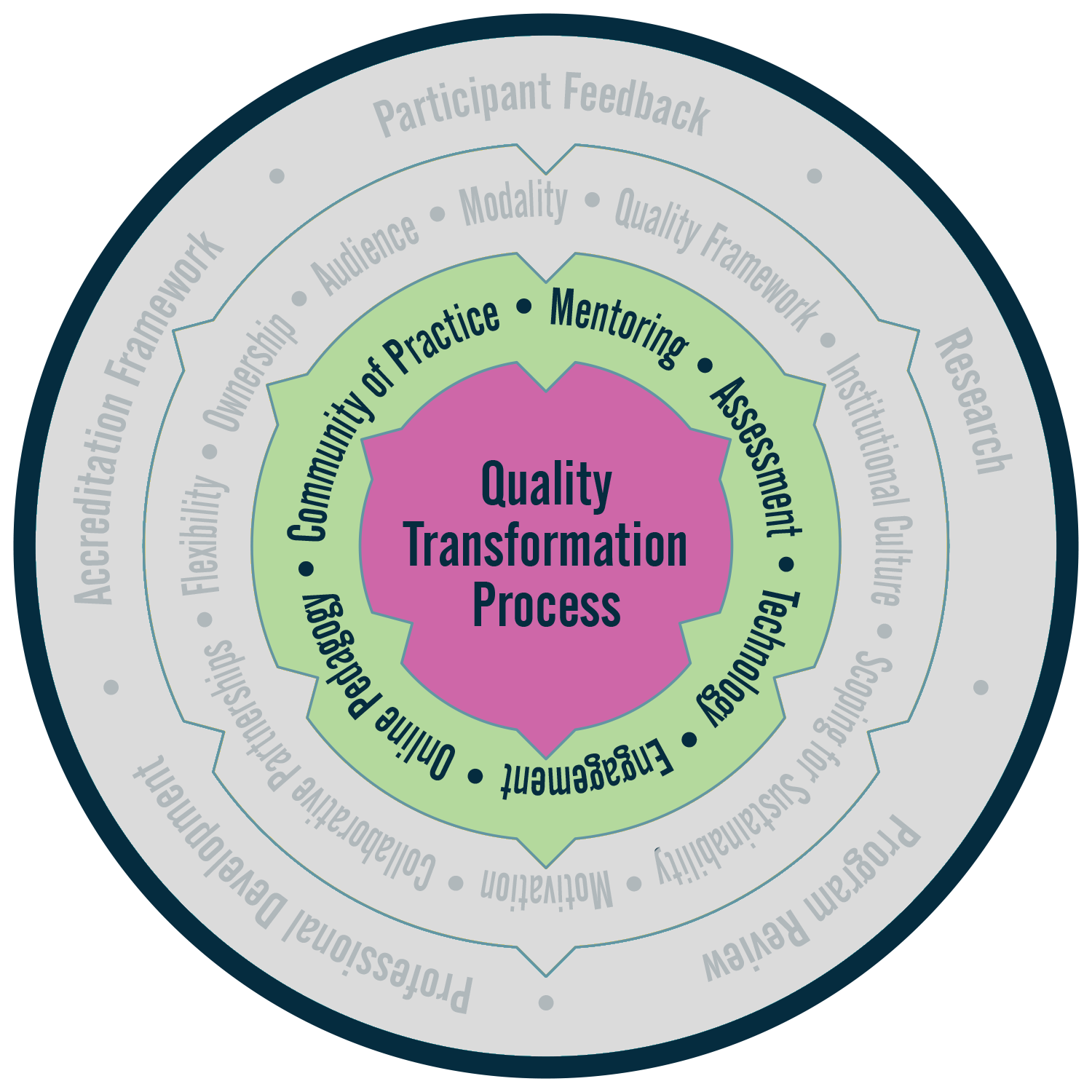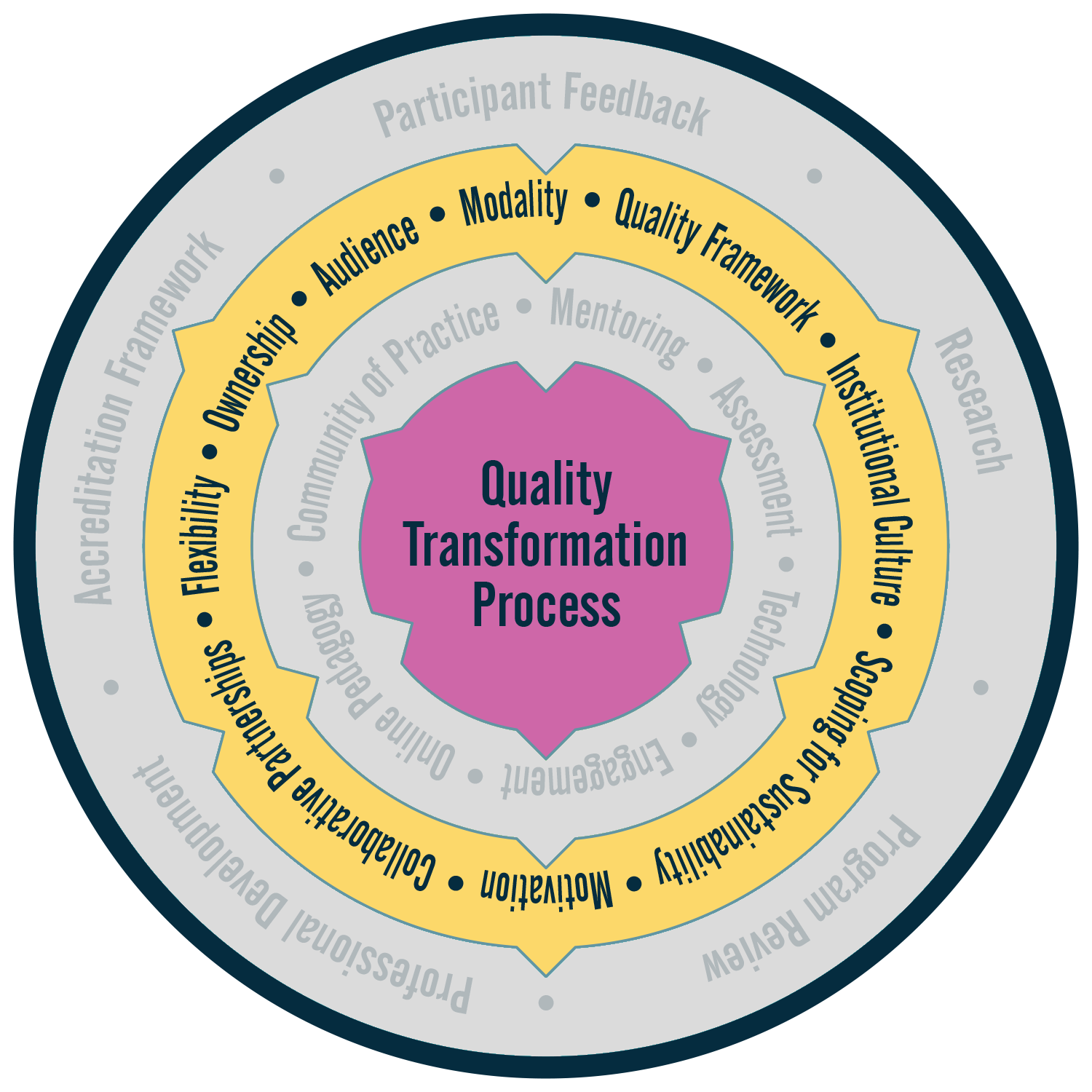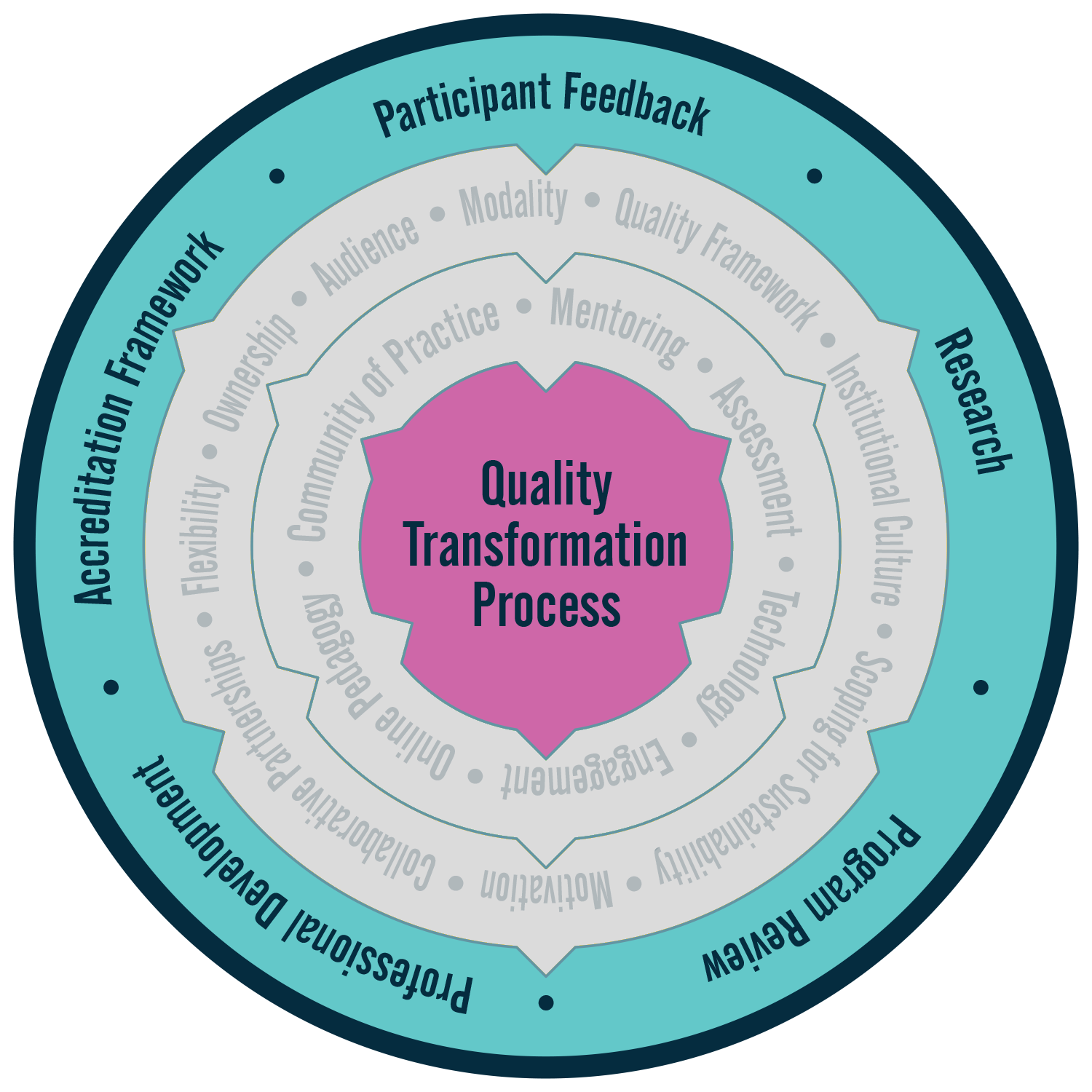
Faculty Development Decision Guide
The Faculty Development Decision Guide (FDDG) is a comprehensive interactive tool designed to allow institutions to evaluate their online faculty development needs, create a plan of action for their own online faculty development program, and have access to resources that will support staff development.
To maximize the use of this tool, users should allow at least 20 minutes to respond to all prompts or questions. Once users have finished completing the evaluation, they will be given the option to print a personalized assessment with resources. The Faculty Development Decision Guide (FDDG) is based on the Quality Transformation Model for Faculty Development (QTMFD) developed by Jowallah, Futch, Barrett-Greenly, and Bennett (2016).
You're doing great!
You have completed the Enabling Transformation section of the guide. That's one third of the way through.
Feel free to take a quick break, but make sure not to leave or refresh this page! Then click the continue button whenever you're ready to go on.
Progress - 1/3
Almost there!
You have completed the Supporting Agents section of the guide. You're two thirds done with the guide.
Again, feel free to take another quick break, just don't leave or refresh the page. Click the continue button below to finish up the last few questions.
Progress - 2/3
You're done!
You have completed the Faculty Development Decision Guide.
Thank you for participating in this experience. To see the tips and resources that we recommend based on your responses, click the button below.
Progress - 3/3

Community of Practice
Description:
Community of Practice is a key component needed for faculty members to engage and learn from each other (Lave & Wenger 1998).
Mentoring
Description:
Mentoring/ Consultation offers faculty members a pathway for interacting with an expert in the field of online teaching and learning.
Assessment
Description:
A faculty development program should be designed to measure the learning and development of participants, as well as the effectiveness of the training program itself.
Technology
Description:
Technology is a key component for faculty engagement. Institutions should develop clear pathways for the integration of technology into online courses.
Engagement
Description:
Active engagement can promote effective online pedagogical practices among faculty, as well as more opportunity for faculty members to learn from one another.
Online Pedagogy
Description:
Knowledge of online pedagogy provides faculty members with the key principles of effective teaching and learning online.
Audience
Description:
Professional development programs must consider the audience; for example, it may be necessary to offer a cadre of programs to address the various needs of faculty members.
Modality
Description:
Modality offers flexible learning pathways in which faculty members can engage in and complete staff development training.
Quality Framework
Description:
A staff development training program should involve one or more frameworks relating to online quality assurance.
Institutional Culture
Description:
A successful staff development program must take into consideration the shared values, routine practices, and support systems within the institution.
Scoping for Sustainability
Description:
The sustainability of a staff development program requires the mapping of resources and personnel for continued faculty development and support.
Motivation
Description:
Motivation is a key factor in promoting and supporting faculty engagement in their online faculty development course.
Collaborative Partnerships
Description:
Faculty members should work towards establishing collaborative partnerships with shared goals of ultimately enhancing online course development and delivery.
Flexible and Accessible Learning
Description:
As a model of good practice, faculty members should work towards addressing Universal Design for Learning (UDL). In addition, the training program should give attention to faculty members who require special accommodations.
Ownership
Description:
The ownership of the training program needs to be identified.
Participant Feedback
Description:
Faculty members’ feedback is key in providing a high-quality faculty development program.
Research
Description:
Continuous research will enhance the quality of faculty development program(s).
Program Review
Description:
A periodic review of faculty development programs is essential for driving improvement and ensuring program relevance.
Professional Development
Description:
Faculty members should be provided with continuous professional development opportunities that seek to address the changing landscape of online teaching and learning.
Accreditation Framework
Description:
Faculty members’ development program(s) must be aligned with the institution's accreditation framework.


